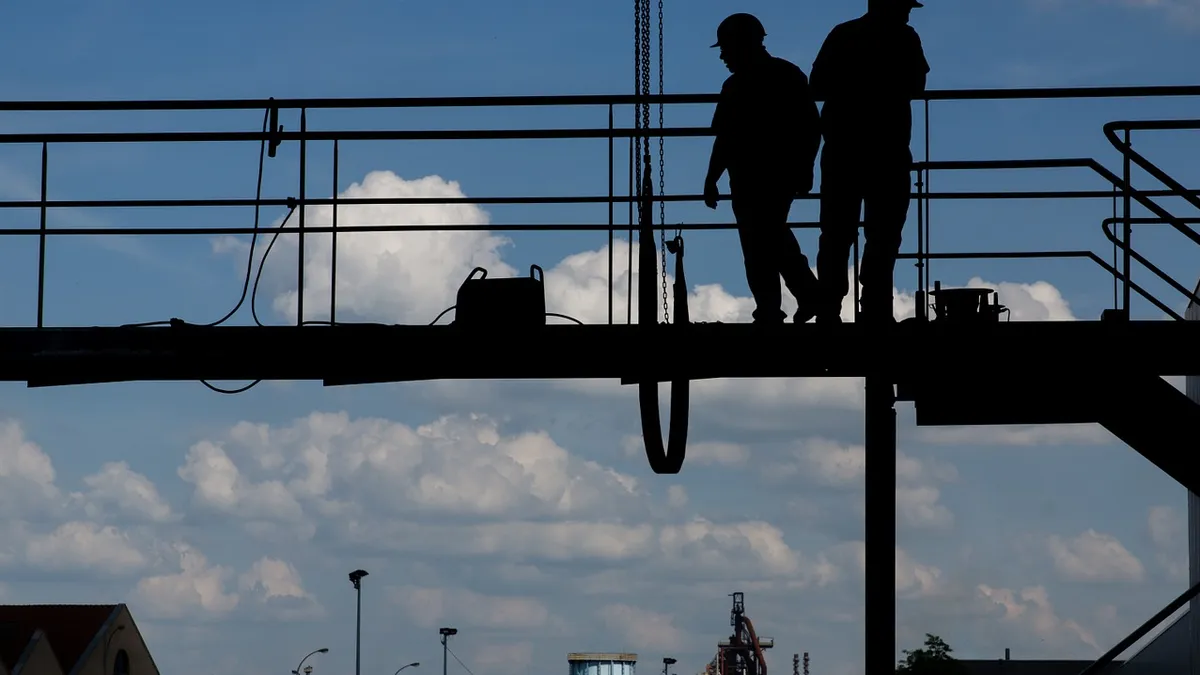Editor's note: The following is a guest post from Greg Sizemore, the vice president of health, safety, environment and workforce development for Associated Builders and Contractors.
Across the United States, communities are working diligently to respond to the coronavirus outbreak. From healthcare to food distribution and other essential services, all industries are assessing ways to keep their workforce healthy and safe while meeting the needs of our nation during this time of crisis.
On construction jobsites, health and safety drives decision-making processes when it's business as usual, but especially during unprecedented circumstances like the COVID-19 outbreak, which completely shifts the paradigm.
Can construction continue safely within the guidelines of local health departments and the Centers for Disease Control and Prevention? In some instances, it can’t. Consequently, many contractors have shut down jobsites. But in many cases, it can — and it should.
Contractors will be needed to safely build, expand and maintain hospitals and healthcare facilities to care for COVID-19 victims and patients who need critical care after a car accident or heart attack. Contractors will be needed to safely retrofit existing structures such as dorms, hotels and stadiums for emergency use, modify manufacturing facilities due to increased demand for medical supplies and provide new transportation corridors for people and materials. We also need construction safely performed to rebuild facilities after an earthquake, fire, flood, hurricane or tornado like the recent one in Arkansas and provide shelter for people left homeless after such a disaster.
We don’t want to find ourselves in a nightmare scenario where America cannot muster trained, professional construction crews to deal with the most pressing emergencies our nation experiences year after year. A virus pandemic does not halt national disasters.
Not a single decision in the construction industry is made without answering two core questions: Can our workforce continue to perform work safely? And what steps need to be taken to ensure that safety?
Today, and every day, safety is paramount for Associated Builders and Contractors and its 21,000-plus members. It’s in the very DNA of how we perform.
On essential construction projects being built by ABC members, contractors are taking steps to ensure compliance with health recommendations from the CDC. This requires some jobsites to create an enhanced project safety plan while some will require a significantly modified safety plan and others will have to stop work completely until a new project safety plan can be put in place, if at all.
For our workforce, every single employee on a construction jobsite is empowered to stop work if they don’t feel safe. There is an increased emphasis on personal hygiene and overall jobsite sanitation. Contractors are changing how work is planned and executed in order to comply with social distancing and other recommendations from local health departments.
This commitment means different things on different jobsites based on market, location and size.
Some ABC member companies have hired onsite health care professionals and are conducting daily temperature checks before employees enter the jobsite or office space. Some companies are reducing crew sizes and controlling how many workers can be on a jobsite at the same time. Information on the coronavirus and related safety best practices is being shared in daily toolbox talks. Meetings that can take place over conference calls or videoconferencing have further enhanced social distancing. Some are choosing to temporarily stop work.
As this crisis and the related safety recommendations continue to evolve, ABC members can and will modify construction activities further. Yet ABC’s singular focus on safety includes not only the safety of our workforce — which is our No. 1 priority — but the safety of our communities where we perform work.
This epidemic has disrupted businesses, school systems and industries across the United States, to name a few. It is also deeply affecting families from a health, finance and job security perspective, which is also why it’s important to keep our workforce on the job when it is deemed essential — but only if we can do so safely.
During unprecedented circumstances, there is also a natural increased risk for depression and anxiety, especially given the isolation of social distancing. That’s why, on a personal note, I am asking you to reach out to your colleagues, neighbors, friends and families. Call to check in. Ask how they are doing. And offer support.
And in the long term, I am asking that this tragedy serve as a call to action to expand the resources available on our jobsites and in our industry to proactively engage with our employees beyond their physical health and safety but their mental health and safety as well.
Finally, be sure to thank and support our healthcare providers, first responders, armed forces, truck drivers, grocery and pharmacy staff, food producers, manufacturers, warehouse workers, package delivery services and trash collectors; the workers who maintain our energy, communications and transportation infrastructure sectors; and all the other essential services too numerous to name here. We wouldn’t be able to get through this crisis without them.
Disruption is often the catalyst for growth. Whatever U.S. industries implement as a result of the COVID-19 response to make work environments safer and healthier must be the new normal in safety performance when or if we get back to business as usual. The fabric of America is made up of a resilient and diverse population, and it is often the difficulties we face that create stronger communities, as well as a safer workforce.



















